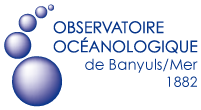A step in the deep evolution of Alvinellidae (Annelida: Polychaeta): A phylogenomic comparative approach based on transcriptomes
Résumé
The Alvinellidae are a family of worms that are endemic to deep-sea hydrothermal vents in the Pacific and Indian Oceans. These annelid worms, a sister group to the Ampharetidae, occupy a wide range of thermal habitats. The family includes the most thermotolerant marine animals described to date such as the Pompeii worm Alvinella pompejana, and other species living at much lower temperatures such as Paralvinella grasslei or Paralvinella pandorae. The phylogeny of this family has not been studied extensively. It is, however, a complex case where molecular phylogenies have given conflicting results, especially concerning the monophyletic or polyphyletic nature of the genus Paralvinella.
We carried out a comprehensive study of the phylogeny of this family using the best molecular data currently available from RNAseq datasets, leading to several hundred orthologous transcripts for 11 of the 14 species currently described or in description. The results obtained by the two most popular phylogenetic inference models (using either gene concatenation with maximum likelihood, or a coalescent-based model from gene trees) were compared using a series of ampharetid and terebellid outgroups.
Our study shows that the global phylogenetic signal favors the hypothesis of paraphyly for the Paralvinella genus, with P. pandorae being sister species of the other Alvinellidae.
However, a high number of gene trees also supports the hypothesis of alternative trees in which the monophyly of the Paralvinella genus, as initially proposed by Desbruyères and Laubier, is valid with the species P. pandorae and Paralvinella unidentata being sister species. According to molecular dating, the radiation of the Alvinellidae was rapid and took place in a short period of time between 80 and 110 million years ago. This is reflected at the genomic scale by gene trees equally separated between different phylogenetic hypothesis, showing high rates of incomplete lineage sorting between the first lineages of the Alvinellidae and probable gene transfers. Although different genomic regions seem to have different phylogenetic stories in the early step of the alvinellid radiation, our study supports the view that the two P. pandorae species can be grouped into a separate genus (possibly Nautalvinella) and that the Miralvinella subgenus, defined by Desbruyères and Laubier, is not valid anymore.
| Origine | Publication financée par une institution |
|---|---|
| licence |



